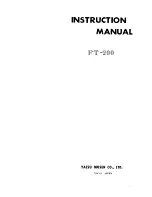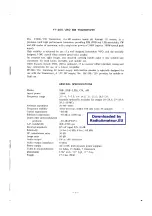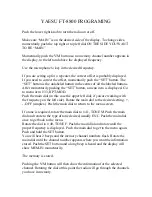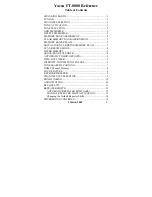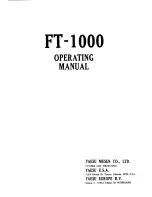
A
12-17 Combustible Gas Transmitter
O & M Manual
Rev-H, 7/15
- 10 -
SENSOR LOCATION
Combustible gas sensors are used to detect a variety of gases or vapors. The proper sensor
location will depend on the type of gas is expected. For gases that are lighter than air, such as methane,
sensors should be located near the ceiling. For gases that are heavier than air, such as butane, sensors
should be mounted near the floor. If the gas or vapor has a density near that of air, locate the sensor
about 5 feet off the floor in enclosed areas. Gas sensors mounted outdoors should be located near
anticipated leak sources (valves, flanges, compressors, etc.) and the location will depend on normal wind
patterns and anticipated employee activity areas.
The following are a few common combustible gases, along with their relative density (air = 1.00).
Densities less than one indicate gases that are lighter than air while those with densities greater than one
are heavier than air. Combustible vapors from most solvents, such an Benzene, n-Hexane, Methanol,
Ethanol, and MEK, are heavier than air and will tend to accumulate near the floor in enclosed spaces with
little air movement.
Methane
0.55
Butane
2.11
Propane
1.55
Hydrogen
0.07
Ammonia
0.60
INTERFERENCES
Combustible gas sensors contain two heated elements. One of these elements is active, and will
allow combustible gases or vapors to burn on its catalytic surface. The other is passive, and does not
react to gases. These two elements form two legs of a Wheatstone bridge measuring circuit. When
combustible gas contacts the sensor, the active element burns this gas and the temperature of this
element increases, changing its resistance. The transmitter measures the imbalance in the bridge circuit
and transmits the data to the receiver for display and alarming purposes.
Combustible sensors are adversely affected by a few compounds that may be present in a given
application. Probably the worst of these are silicone vapors from silicon based lubricants or sealants.
High silicon vapor concentrations can cause complete loss of sensitivity in as little as a few hours. These
sensors should not be used where silicon vapors are normally present, and sensors should be protected
from these vapors if such compounds are in use temporarily.
Lead compounds and high levels of hydrogen sulfide can also cause degradation of combustible
sensors. While lead vapors are not commonly encountered, they can also cause complete sensor failure
if encountered. Hydrogen sulfide will cause reduced sensitivity over the first few weeks of exposure, but
then will level out. The effect of hydrogen sulfide can normally be compensated for by re-calibration after
the first few weeks of use.
Содержание A12-17
Страница 12: ...A12 17 Combustible Gas Transmitter O M Manual Rev H 7 15 12 Figure 6 Transmitter Connections with Auto Test...
Страница 14: ...A12 17 Combustible Gas Transmitter O M Manual Rev H 7 15 14 Figure 9 Dual Condulet Typical Installation...
Страница 21: ...A12 17 Combustible Gas Transmitter O M Manual Rev H 7 15 21 Figure 14 cont d Transmitter Program Chart...



























